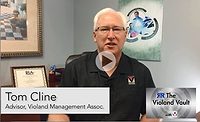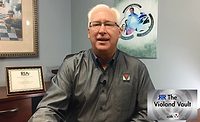In Part I of this article, we explored the concept of positioning, the strategy option of serving the deeper needs of a narrower set of customer markets, and clearly understanding what sets our companies apart from the competition in terms of the order winners that give us an advantage. In Part II, we will expand on the “narrower and deeper” strategy and look at the powerful benefits that can be realized by focusing on bringing the best people into our organizations.
Going deeper with commercial customers relies on gaining an understanding of their objectives; what they are trying to accomplish or focus on in their businesses. Your conversations with them need to go well beyond simply asking how you can do a better job of providing the services you offer. You need to find out what barriers exist, or what is keeping them from staying focused on the things that are truly important for their success. Your business development team needs to be building relationships to the point where these discussions are not only possible but taking place on a regular basis. Your sales reps need to be able to ask probing questions and explain that building a long-term partnership is about more than just the transactions between your organizations.
The biggest hurdle to executing the type of strategy being proposed is likely to be located between the owner’s ears! Moving beyond delivering services related to cleaning, mitigation, and reconstruction—the things you know and are familiar with—and thinking outside the box about ways you can help your customers succeed will be unnerving. It will take you and your people out of your comfort zones. You will venture into areas that aren’t described by your company’s name, or the information on your website, or displayed on your company vehicles. Remind yourself that our industry is changing. Your cheese has been moved, as Spencer Johnson would say. If you are to survive, you must change as well.
If finding and retaining good people, for example, is something your customers are spending considerable time and resources on, is there a way you can help them with that? Have you found a supplier that conducts assessments or provides tools your company has adopted that have helped you make better hiring decisions? Do you have a formula for the format and content of job ads you place, perhaps one that focuses on desirable character traits rather than industry experience? Have these changes resulted in reduced turnover, and higher productivity and morale in your business? If so, it’s likely that some of your customers will find value in these resources, too. Even though the people they are looking for won’t have the same skills or experience, the assessments, tools, or processes you use may hit the mark in addressing their needs.
Remember that the value or resources you offer don’t have to be provided directly by your company. Supplier or partner relationships that your team has developed with others puts you in a position to refer them to your customers; perhaps acting as the conduit for their goods and services. One element of the positioning you create for your business, then, is that of a partner with your customers. You are there to help them succeed, not only with the property damage or maintenance issues they face but by providing other resources and information as well.
Let’s go back to the “finding good people” issue. Even more significant than providing value to your customers is having the right people in your company. It is critical to your long-term success as we face the changes taking place in the restoration industry. (Refer to Part I of Positioning, People, and Partnerships.) One of the keys to maintaining consistently robust profitability in the face of price pressure from TPAs, increased competition from larger, consolidated firms, and expanding franchises is to apply LEAN principles to your organization. Controlling waste across the board will allow you to focus more spending on your people. Attracting and retaining the best people—made possible, in part, by compensation levels that are above market rates—will enable you to successfully pursue the “narrower and deeper” business strategy. Your people’s abilities, ideas, teamwork, and customer focus will become an order winner for you. The partnerships you develop in the commercial arena and the positive experiences your team members provide residential customers will set you apart from the competition.
We all face the challenges of finding good people in today’s market, and this will only become more difficult in the future. Establishing a winning culture based on teamwork, customer focus, and employee empowerment, combined with attractive compensation and opportunities for advancement will allow you to pay greater-than-market rates for the desirable employees who are out there. Having your team stacked with “A” players will reduce the time spent dealing with unproductive employees and disruptive behavior, and increase the focus on satisfying your customers while operating LEAN.
Imagine how attractive and effective your business will be when your people want to be there, are all aligned with the vision you provided and the strategy you developed together to take you there, and are focused on how, as a team, they can consistently deliver industry-leading value to your customers.
The bottom line is that it’s getting tougher to consistently earn the profits that we’ve come to expect in restoration. The industry and markets are changing in ways we cannot control. We can, and must, use the available leverage in properly positioning our businesses by applying the right business strategies, developing and using partnerships to bring unparalleled value to our customers, and bringing the right people into our organizations—those who are engaged in our long-term success and are committed to providing game-winning customer experiences. The combination of Positioning, People, and Partnerships permits each of us to decide what our business stands for, and then relentlessly execute in ways that reinforce our advantages over the competition.





Report Abusive Comment